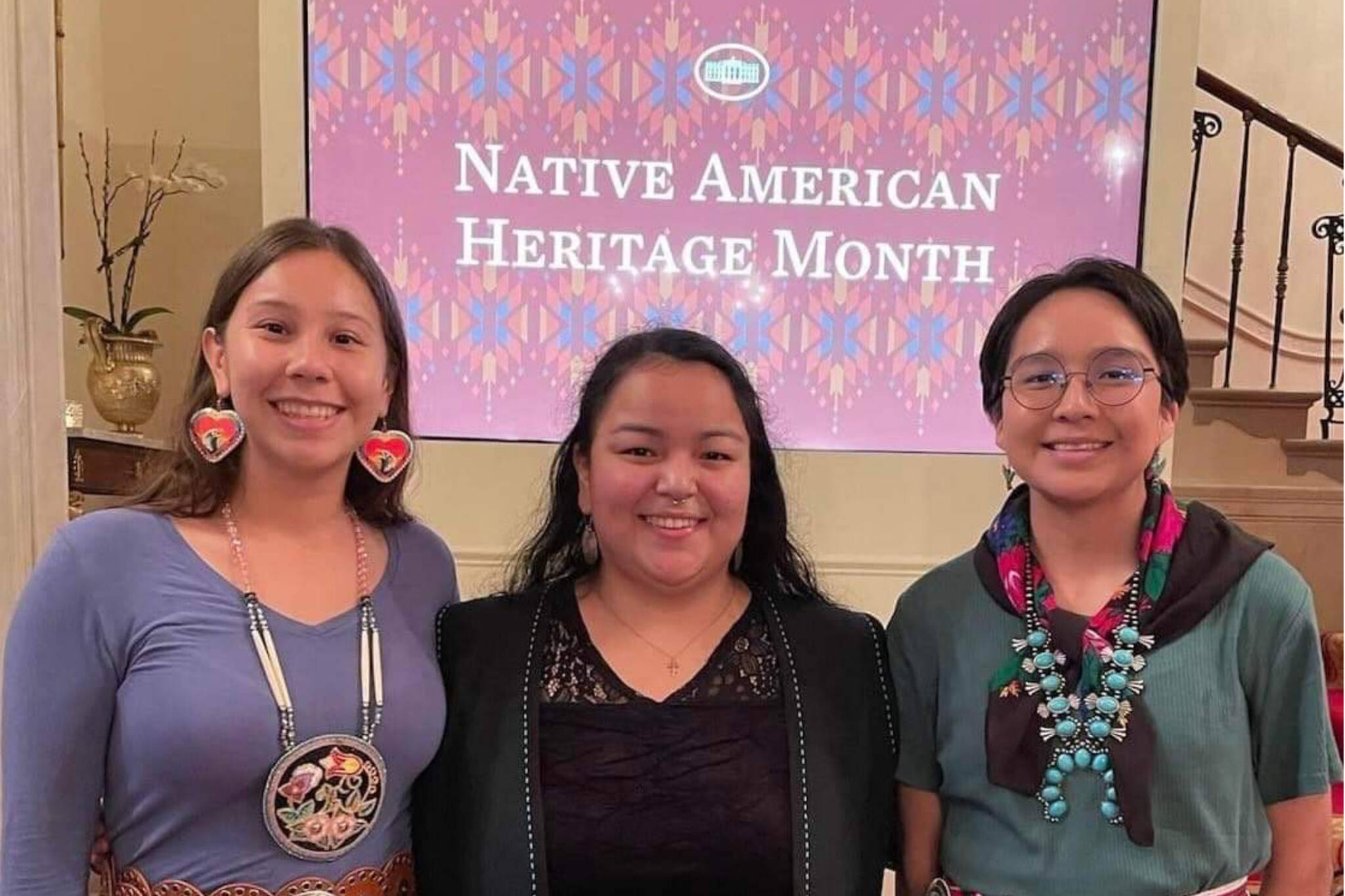Since Kylie Kookesh was just 8 years old, she knew she wanted to go to the White House — but said she never thought it would be her reality.
However, just last week, Kookesh, who is Tlingit, found herself in Washington, D.C., to discuss issues most important to her life and the Alaska Native community in Angoon where she was raised.
“Coming from a small community in Alaska like Angoon, I never would have thought that would be there,” she said. “It was amazing.”
Kookesh was among two other Indigenous students from her college, the University of Kansas, invited to participate last week in the annual White House Tribal Youth Forum hosted by the White House, United National Indian Tribal Youth and the Center for Native American Youth at the Aspen Institute.
There, she joined nearly 100 Indigenous students, including a handful of Alaska Native students, high-level administration officials and special guests along with First Lady Jill Biden to discuss topics like climate adaptation and resilience in Indigenous communities, food sovereignty and security, mental health and education in Indigenous communities among other issues.
Following the forum, Kookesh and the other students were also invited by the first lady to visit the White House for a celebration of Native American History Month.
“As we build a brighter tomorrow, all of you are leading the way — coming together to light a better path, healing each other and the country we call home, working tirelessly for the communities you love,” the first lady said. “And I see that spirit in you, too — good-hearted, ready for anything, fighting for what you believe in — for the future we all share.”
Kookesh, a junior at KU studying elementary education, said she hopes to use the knowledge she gained from the experience to better her skills in education and bring that knowledge back to Angoon where she plans to teach after graduation.
“Something that stuck with me that was said was, ‘You are your ancestor’s best bet for a better future,’” she said. “I got the chills when I heard that.”
Kookesh said during the forum she was able to speak with other Indigenous students from various parts of the country to talk about their individual experiences and to workshop ideas for better education and language resilience in their respective communities.
“I grew up very close-knit to my community and learning our language, and I think it’s really important to keep it going because we need the next generation to carry on who we are,” she said. “I want to be able to be one of those teachers to help carry it on.”
Kookesh said she found speaking with other Indigenous students was impactful because she was able to collaborate about the unknown struggles happening across communities along with being able to relate with people going through similar experiences to her own.
“I think the collaboration, getting a partnership with them, helps us protect our culture,” Kookesh said.
She said she was nervous about attending and thought “why did they choose me?” but said she knew it was important to be there both to represent her Angoon community and other small Alaska Native communities in Southeast Alaska.
“I realized it was important to try to get the word out and to think about that on another level and what can we do as a whole to try to keep our language and culture alive,” she said.
• Contact reporter Clarise Larson at clarise.larson@juneauempire.com or (651)-528-1807. Follow her on Twitter at @clariselarson.

